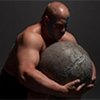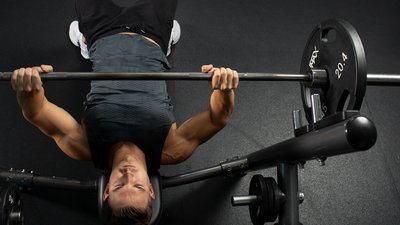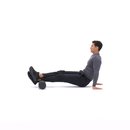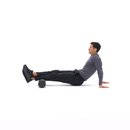In February 2013, NFL linebacker Brendon Ayanbadejo had the best send-off a professional football player could hope for. After recording a career-high 43 tackles during the regular season, he helped the Baltimore Ravens culminate their "season of destiny" by defeating the San Francisco 49ers in Super Bowl XLVII. Afterward, without a contract and 37 years old, he seemed to see the writing on the wall.
"For a guy in my field, I've done everything you can do in the NFL," Ayanbadejo told USA Today after the Super Bowl. "There's no need to cry for me."
Always one of the strongest and best conditioned athletes in the NFL, Ayanbadejo has since transitioned seamlessly from the gridiron to the gym. He has become heavily involved in Orangetheory Fitness, a high-intensity training style that mixes resistance training with rowing and sprinting, and has opened several franchises in California. A long-time proponent of strategic supplementation for athletes, Ayanbadejo also now works with Image Sports.
Always one of the strongest and best conditioned athletes in the NFL, Ayanbadejo has since transitioned seamlessly from the gridiron to the gym.
In an interview with Bodybuilding.com, Ayanbadejo discussed the methods he uses to keep developing his body and those people he trains.
Q. What is your general philosophy on training right now?
Right now when I work out I am mostly about functionality and fitness. I do a lot of sprinting, pull-ups, jump squats, and things that keep me functional and athletic. I also want to look good, so I do a lot of bodybuilding basics.
That is why my physique is different than a lot of guys in the NFL. A lot of them are training just for maintenance, recovery, and functionality; I do all those things, but then I also do the bodybuilder movements as well.
How has training for football players in particular evolved since your early days?
There is a lot more functional training involved than there used to be. They used to have football players do ballet because we didn't have enough advanced movements. We weren't evolved enough in our strength and conditioning programs to teach agility and techniques that would make you more flexible or agile.
Now we have those movements. We also incorporate Pilates, yoga, and drills that mimic ballet to help your feet, agility, and stability. That's the main difference.
How should athletes train differently in their early careers opposed to someone who has been at it for 20 years?
You have to build your foundation. When I first started training I was doing the Olympic movements. I was doing power cleans, squats, bench presses, all in order to be bigger, faster, and stronger as a player. Those are movements that you need as a kid. You need to get deep into your squats, you need to get deep into your bench, you need to do cleans and jerks and all those exercises which build power and explosion.
Once you have that foundation you aren't going to need to do those things as much and your maintenance has to change. I don't really do Olympic movements anymore; I still do deadlifts and squats, but I'm not doing power cleans or snatches.
These movements are really hard on the body to do for a long period of time. There's definitely ways to work on longevity.
What tips do you have for improving speed? How important is it in your programming? Are your recommendations different when going from athletes to other people who are physique-oriented?
For speed: You have to teach form, power, and explosion. There are so many different things that you can do. If you want someone to be more aesthetic versus performance-based, then obviously you don't have to have someone do all those movements, though a lot of those movements do build nice, full muscles.
Look at a sprinter, whether male or a female. Their bodies can compete with those of natural bodybuilders; they look amazing. It's one thing to look good and perform, and another to just look good and be aesthetic, but either is equally respectable.
What's a fundamental lesson you learned about training?
I think one of the most important things is to never be discouraged. The first time you do something, naturally it's going to be hard. I remember the first time I did Bulgarian squats. I was like, "Man I'm just terrible at these." I remember the next day I was tremendously sore.
I saw other guys doing so much more weight than me. As you challenge your body with something that is very tough it gradually becomes a little bit easier.
That's true in life as well. The weight room has been the place where I've learned that; it changes people's lives. If someone who has struggled their whole life gets into training, they get to sweating, they get to moving, and all of a sudden their life comes together.
They drop 30, 40, 50 pounds, and then they're doing better at work, and they're excelling socially and economically.
It's all because a state of mind develops when you do something you've never done before. All of a sudden, it explodes in your entire life and that's amazing. That's what I love about training.
You were a consistent, healthy player for nearly all your NFL career. How have you fended off injuries over the years?
Time is our biggest enemy and our greatest ally. When you going from age 27 to 37 in professional football, time is working against you, with your hormones, biological clock, and injuries determining how long you can actually play at a high level. It's not too long, but one thing I was able to do is use great supplementation throughout my whole career.
It's come a long way to help athletes play longer and stay at a high level. You see that happening now. You see guys playing a lot longer than they were before. The best thing you can do to fend off injuries is to train. Your muscles, your joints, your ligaments—that's your armor.
The best thing you can do after you train is to put the proper supplements into your body , the proper nutrition that keeps that armor from rusting, from cracking, from breaking, and to keep those joints lubricated. Keep your muscles flexible, keep them healthy, and put the right things in there.
What is your nutritional philosophy?
I have a few basic rules. I try to eat naturally. I don't want to eat any partially hydrogenated oils. I definitely keep away from saturated fats, I keep away from all the preservatives, and I think that is the easiest way that you can check your diet.
I don't prevent myself from enjoying a nice meal, though. I try to do it the right way, eating as naturally as I can, straight from farm to table, eating fresh foods. I will enjoy everything that's out there; it's part of life. I know a lot of these competitors out there, they love to eat, and they have it all on Instagram. If I'm following Jay Cutler, he's definitely going to have a cheat meal on there, and it's going to be funny. If it's a brownie, oh it's a protein brownie or something.
Me? I'm just going to go get a brownie. It doesn't have to be a protein brownie, but it does have to be a natural brownie.
What are your current training objectives and plans for the future?
After being in the mindset of "bigger, faster, stronger," it's hard to go to a gym and only lift 225, because I want to lift as much as I can. At 37 years old I'm trying to get out of that mindset. I don't have to be 230 pounds anymore. I want to be 205 pounds, but I want to be the nastiest 205 that you've ever seen.
My objective is to be smaller and more compact, but to have better cardiovascular fitness. I want to be able to perform in long distance events. I'll do a phase of performance-based training, a phase of bodybuilding (but not heavy), and then I'll go into a power block and do some heavy lifting.
I'm always running something where one muscle is resting and the other is working, so when I go into my power blocks, I have to slow down.

BodyFit
$6.99/month- 2,500+ expert-created single workouts
- 3,500+ how-to exercise videos
- Detailed workout instruction
- Step-by-step workout tips
- Training at gym or at home
- Access to Workout Plans
- Access to Bodyfit App
- Store Discounts
Already have a Bodybuilding.com account with BodyFit? Sign In

What comes with BodyFit?

- Instructional Videos
Don't risk doing a workout improperly! Avoid injury and keep your form in check with in-depth instructional videos.

- How-to Images
View our enormous library of workout photos and see exactly how each exercise should be done before you give it a shot.

- Step-by-Step Instructions
Quickly read through our step-by-step directions to ensure you're doing each workout correctly the first time, every time.




